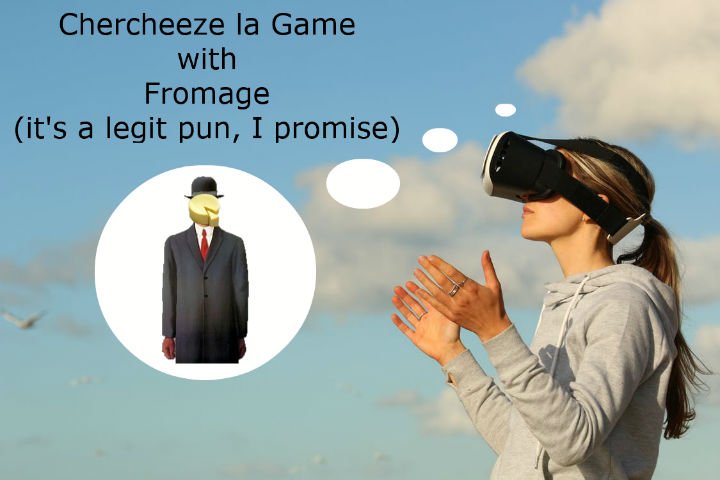
When I was a kid there was this thing where when you bought a game, it came with a little book what taught you how to press A to jump.
In the Atari age, you had to have these to even understand what was happening in the game, and what you were supposed to do.

It's important to know which blob of color you are after all.
I never really played in back then, though. I was too young. My first console was a Sega Master System. By that time, graphics were good enough that you could at least get a decent idea what the sprites were and what the game expected you to do.
Also, it was about this time that games began to have tutorials, in-game instructions on how to actually play them (the history of tutorials would probably be a really cool subject to write on sometime, actually).
As a result, the instruction booklet changed. It stopped focusing on how to play the game and became more of a supplement to it. In those days there was no internet you could hop on to learn more about the extended lore of the enemies and locations in the game.
For most games at that time what you saw was all you got. It was only through the Legend of Zelda's booklet that we knew anything at all about Hyrule, what the shiny triangles we seemed to want so badly were, or even what to call an Octorok.

Ok, that one we should have been able to piece together.
Details like the fact that Birdo from Mario 2 is a dude or the code to your submarine in Startropics just weren't in the game.
As time passed more and more of this ended up in the game, until the manuals became nothing but a place to put the controls (which are, of course, also in the game these days) in case you wanted to learn how to play your game when you didn't have access to it, for some reason.
Pc games, though, were different. Instruction booklets for computer games weren't just designed to teach the game or provide background information, but often were used as a kind of copy projection. Of course, they did their best to hide that fact.
Where in Time is Carmen Sandiego came with an encyclopedia for this purpose, Monkey Island had a decoder wheel with pirate faces, and King's Quest 3 had the recipes for its spells in the manual (and killed you if you made any mistakes) .
As a result of their utility perhaps, PC games brought the art of the manual to its apex.
The best game manual ever made has to be the booklet for Fallout 1. It is presented as a wasteland survival guide and even contains survival recipes in the back.
I actually own a copy of that manual, and it is my most prized gaming possession. It is the perfect summation of everything I love about games, story based while still mechanically rich.
All my game manuals are stuffed in a box right now, awaiting the day I have the room to display them once again. On that day, the fallout manual will be front and center.

That’s really cool man. And what an interesting reflection too, I honesty never thought about the manual like that.
I remember getting in trouble at school for reading the “Star Wars Rebellion” rule book in class. And I remember reading and re-reading the Wing Commander manual when I had played too much of the actual game and wasn’t allowed to any more that day.
Shoot, now you've me got me all nostalgic.
One of the things that I do miss with games is the concept of a manual that actually contains stuff beyond the bare necessities. I'm a little too young to remember most of these first-hand, but I have a lot of second-hand games or their digital re-releases that come with supplemental content that could occupy more time than half of the games coming out these days.
I think it's telling that much of this stuff does exist, but is found elsewhere in the form of premium additions; art-books or authorized setting guides that are taking the place of things that used to be freely available. There are still companies that still bundle supplemental content with their games (Blizzard and Valve, for instance, though much of their work is more advertisement than enrichment), but they're not nearly as prominent and there's a definite barrier between the game itself and this format.
The biggest shame, though, is that you don't see tie-in content that really enriches the experience. Status symbol collector's editions are so vapid that they don't add anything to the experience other than an often tacky ornament for a shelf or a desk.
You can argue that all this stuff was expensive, but it never seemed to interfere with the quality of the games. Instead, it was a display of love for what the programmers, writers, and designers created.
Get better upvotes by bidding on me.
1 SP, 5 SP, 10 SP, custom amount
this description!This post has been upvoted for free by @nanobot with 0.1%! More profits? 100% Payout! Delegate some SteemPower to @nanobot: You like to bet and win 20x your bid? Have a look at @gtw and
Oh man! Gaming manuals were always the best! I remember reading them on the bus when I bought a new game, and they would just be the taster for getting the appetite for the real meat of the game going! It's a real pity that with digital games, our kids are never going to know the pleasure of just holding one of these, and reading and salivating over the art (that just wouldn't be matched in game...)!
Your post was upvoted by the @archdruid gaming curation team in partnership with @curie to support spreading the rewards to great content. Join the Archdruid Gaming Community at https://discord.gg/nAUkxws. Good Game, Well Played!
I remember my brother used to buy a lot of gaming manuals because whenever he plays a game he always wants to finish it 100% without missing anything and he usually doesn't repeat the game unless it is needed.
You gave manuals a whole new lease of life haha
I never kept any, probably because I didn't like reading them.
Trial and error mostly.
So I'm pretty sure there are a lot of stuff I missed and didn't know about.
So cute that you will display that manual loud and proud when you get the chance
I hope it is soon
Thank you for sharing @fromage :D